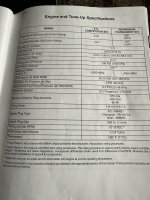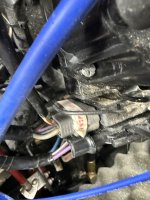I pulled all of the plugs after the engine was failing to reach WOT and then backfiring on acceleration. They are all in need of replacement, but one (photo attached) was so bad, the electrode was completely gone. This is a carbureted engine, 1997, serial # OK146780. I was running AC Delco MR43 T, which is for the pre Vortec head, which I verified I have with the 12 bolts on the intake manifold, so I think I had the right plug.
The missing electrode condition was on one plug (not the same one) the last time I changed plugs. I didn’t keep good records, but the last plug change was about 200 hours and five years ago.
Any Ideas on what would cause this damage?
The missing electrode condition was on one plug (not the same one) the last time I changed plugs. I didn’t keep good records, but the last plug change was about 200 hours and five years ago.
Any Ideas on what would cause this damage?























